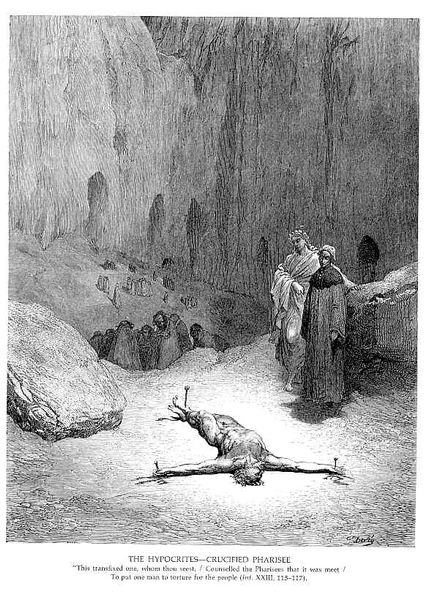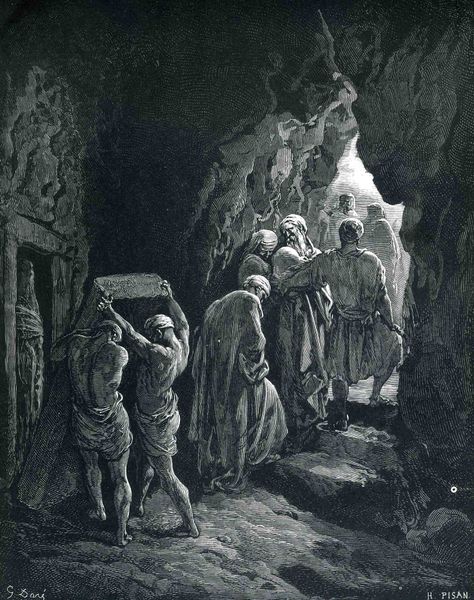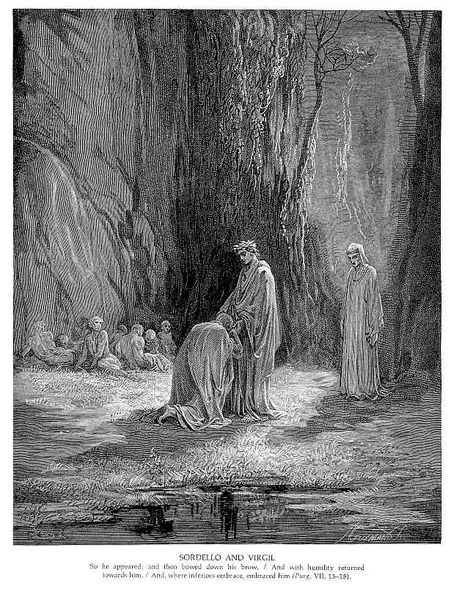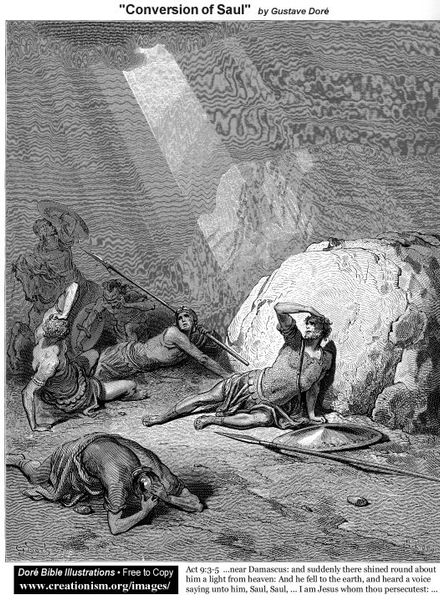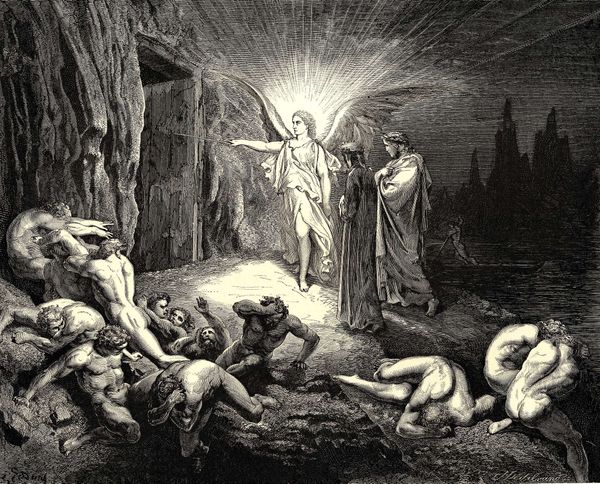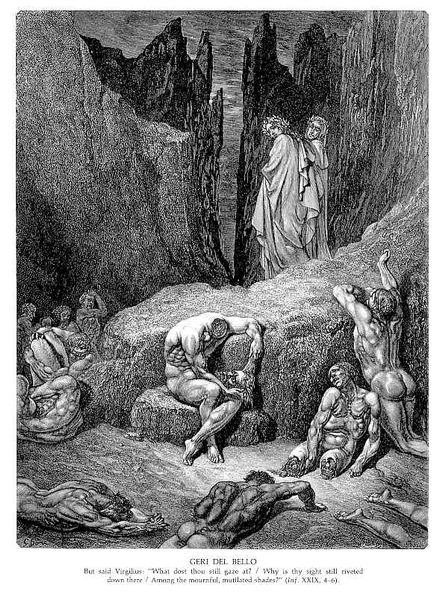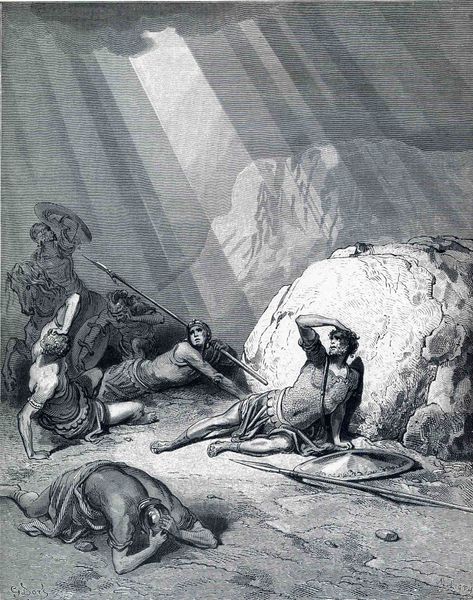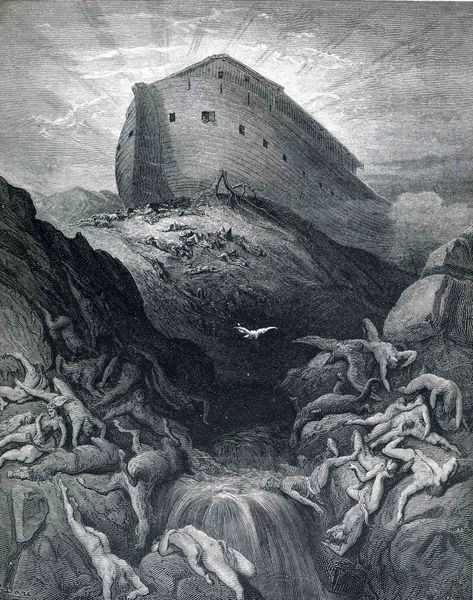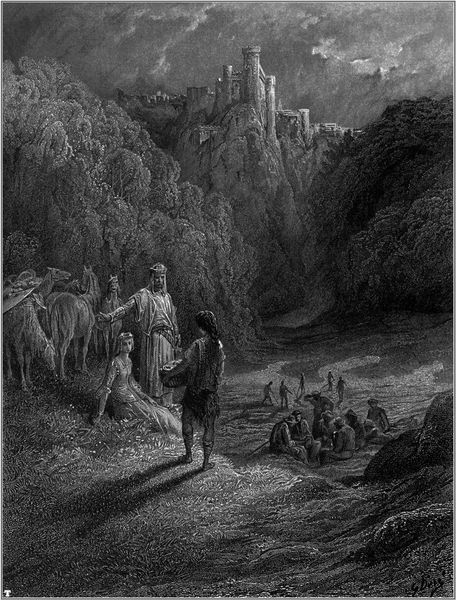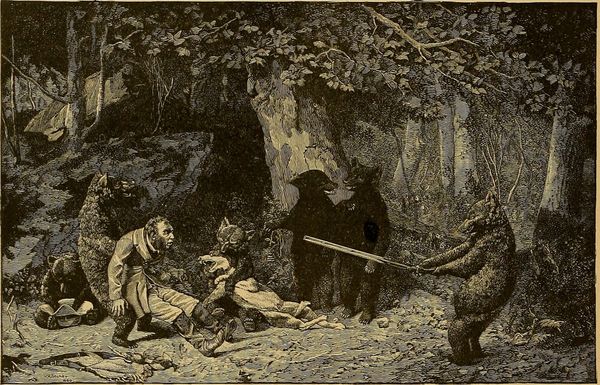
drawing, mixed-media, print, engraving
#
drawing
#
mixed-media
#
narrative-art
# print
#
sculpture
#
landscape
#
eerie mood
#
figuration
#
derelict
#
romanticism
#
gloomy
#
mythology
#
symbolism
#
history-painting
#
engraving
#
erotic-art
Copyright: Public domain
Editor: Looking at Gustave Doré's "The Inferno, Canto 6," a mixed-media print, one is immediately struck by the oppressive gloominess. The chaotic figures in the background, the monstrous Cerberus in the foreground… what are we to make of this darkness? How does it fit into its cultural context? Curator: Doré's vision of Dante’s *Inferno* resonated powerfully in 19th-century Europe. Consider the rise of industrialization and urbanization, which created stark social inequalities and anxieties. How might images of damnation and suffering serve as both a warning and a form of social commentary, reflecting on the consequences of moral failing? Editor: So, beyond illustrating Dante, Doré is also reflecting on his own society's "inferno," in a sense? The corruption, maybe? Curator: Precisely. Romanticism in art engaged with themes of moral corruption, of the loss of tradition, and political turbulence. These artists offered dramatic imagery that often reflected these growing concerns within society. Doré depicts not just individual sin, but a system of suffering that seems inescapable, mirrored by anxieties of his era. Do you see how that "system" is rendered visually, for example in composition, lighting or distribution of bodies? Editor: I think so! There's the sheer number of bodies on the left, contrasted with the oppressive darkness engulfing everything else. It feels deliberate. Curator: Exactly. The staging contributes to its public and political functions, reminding its audience of a society spiralling in despair, just as the "Inferno" condemned corrupted Florentines. What did you gain from seeing the art through the sociohistorical landscape of Doré’s time? Editor: It is clear that artworks like Doré’s operate on multiple levels. They retell old stories to cast light on current concerns! Curator: I agree entirely! It really highlights the ongoing dialogue between art, history, and the observer.
Comments
No comments
Be the first to comment and join the conversation on the ultimate creative platform.

